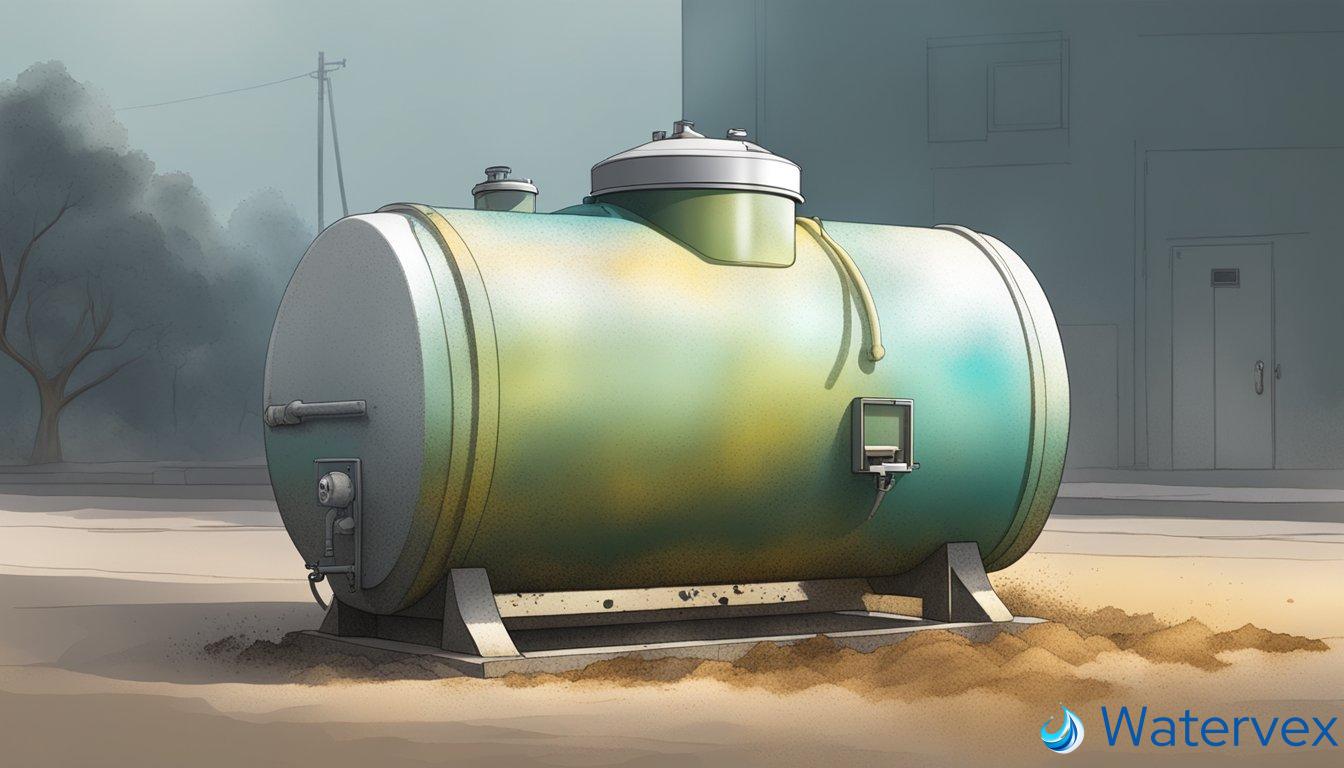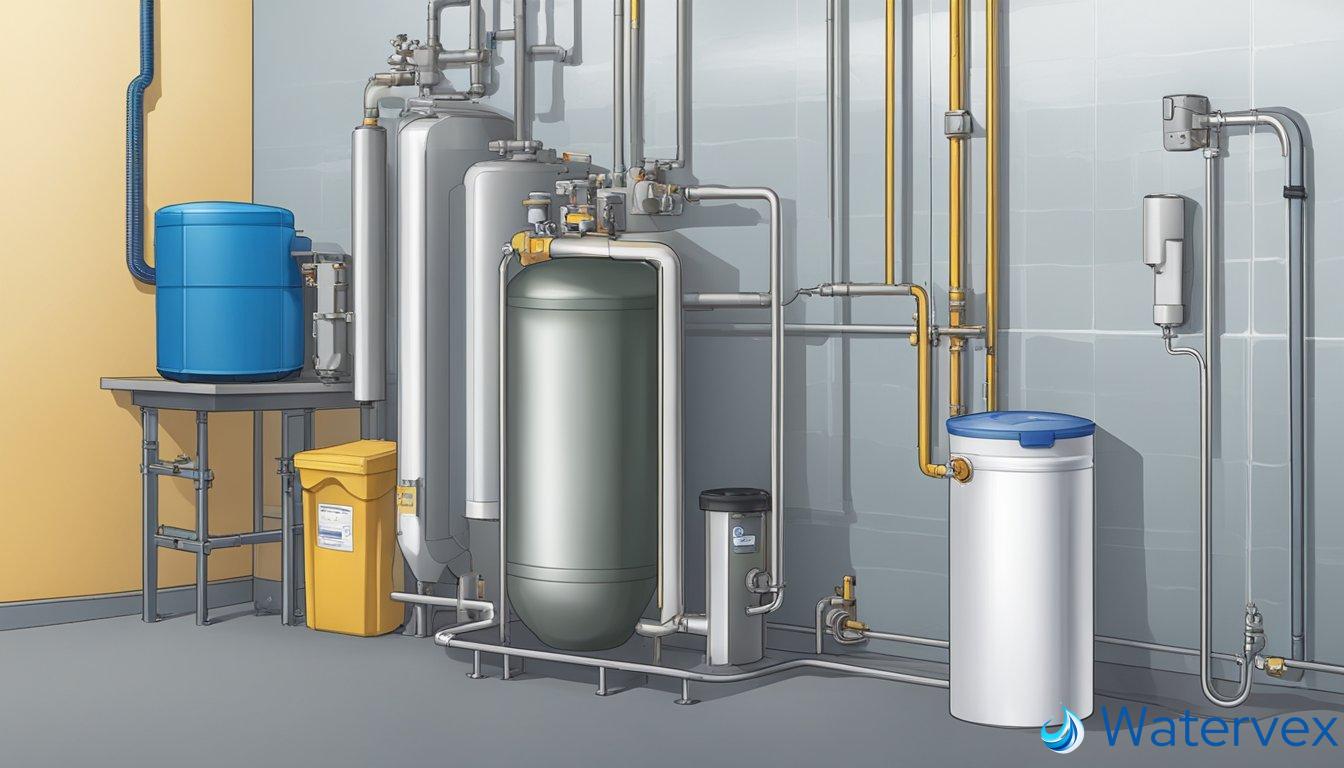Discovering a dirty brine tank in your water softener system can be puzzling and concerning. The brine tank is a crucial component of water softeners, as it is where the water is softened through an ion exchange process. Dirt, sediment, or brown sludge in the tank can indicate a range of issues, from bacterial growth to a build-up of insoluble materials. Iron Reducing Bacteria, in particular, may oxidize soluble iron in the water, resulting in a brown foam or sludge that’s noticeable in the tank.

Regular maintenance of your water softener’s brine tank is essential for preventing contamination and ensuring the system operates efficiently. Neglecting the cleanliness of your water softener’s brine tank can lead to problems such as salt mushing and bridging, which in turn can affect the performance and longevity of the resin bed. Cleaning the brine tank regularly will help prevent the accumulation of sediment and keep the water softener system working as intended, protecting your water supply.
Key Takeaways
- A dirty brine tank can be a sign of bacterial growth or sediment build-up.
- Proper maintenance is crucial for preventing issues that affect the water softener’s performance.
- Regular cleaning of the brine tank helps maintain an efficient and effective water softening system.
What Causes a Brine Tank to Become Dirty?

Your water softener’s brine tank is essential for swapping hard minerals with sodium ions to soften water. Over time, several factors, including water conditions and maintenance frequency, can cause your brine tank to become dirty.
Are There Specific Water Conditions That Contribute to Brine Tank Dirtiness?
Iron and Manganese: Presence of iron and manganese in water can lead to sludge and staining in the brine tank, creating murky brown deposits. These elements can come from well water or old pipes and need to be filtered out before they reach the softener.
Sediment and Dirt: If water contains excessive dirt or sediment, these particles can settle at the bottom of the tank. Over time, they accumulate and form layers of grime.
Mineral Buildup: High levels of water hardness contribute to mineral buildup inside the brine tank. When hard water is left untreated, calcium and magnesium can solidify and create scale.
Salt Bridges: A layer of hardened salt, known as a salt bridge, can form and prevent proper brine formation. This situation is often mistaken for dirt but can be just as problematic.
In conclusion, if your water supply has high levels of iron, manganese, dirt, or sediment, vigilance is key. Check your brine tank regularly for signs of such contaminants to keep your system clean and efficient.
How Can Regular Maintenance Prevent Brine Tank Contamination?
Regular maintenance is key to ensuring your brine tank remains clean and operational. Neglecting cleaning and maintenance tasks can lead to the buildup of impurities, causing issues with your water softener’s performance.
Schedule regular cleaning: Aim to clean your brine tank at least once a year. If you notice any dirt or sediment, it’s a sure sign it’s time for a cleaning solution to do its work.
Inspect for Salt Bridges: Salt bridges create gaps, preventing salt from dissolving into brine. Gently break any crust that might have formed with a stick or tool specified in your service manual.
Check for Salt Mushing: This is a thick sludge at the bottom of the tank caused by dissolved salt recrystallizing. This can block water flow and must be removed during cleaning.
Maintain the cleanliness of your brine tank to avoid these issues:
- Use pure salt with iron removers if your water has high iron levels.
- Ensure the tank is not too full or too empty to prevent salt bridges and mushing.
- Diagnose any malfunctions immediately to minimize the risk of contamination.
Keeping up with these maintenance tasks can prevent common problems such as blockages and bacterial growth that could lead to a dirty brine tank. Using the right cleaners will help maintain the efficiency and longevity of your water softener system. Remember, the key to a clean brine tank is regular and thorough maintenance.

